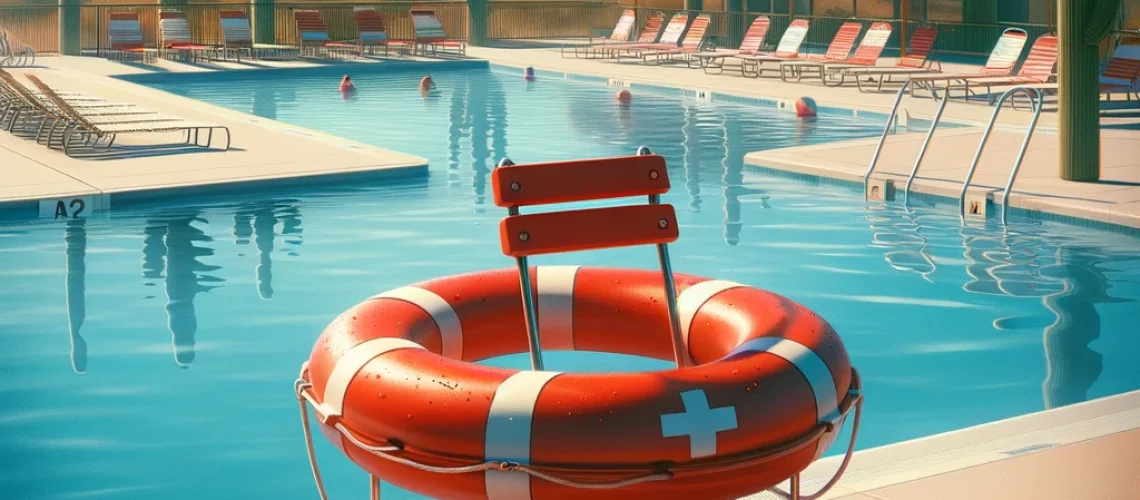Phoenix Pool Drownings
Phoenix pool drownings, while not as frequently discussed as other household accidents, represent a critical safety concern that demands attention. This issue distinguishes itself with a unique urgency and gravity, particularly in a region where backyard pools are common and the climate invites year-round swimming activities. This specific challenge sets it apart in the broader context of water safety, offering a distinct scenario that underscores the need for specialized prevention strategies.
Key approaches to mitigating the risk of pool drownings include constant supervision, the implementation of physical barriers, and education on water safety practices. Each of these strategies plays a crucial role in creating a safer swimming environment, with pool fences and covers providing a physical line of defense, and swimming lessons offering individuals the skills necessary to navigate water safely. Researching deeper, each prevention method offers its own set of benefits, logistical considerations, and recommendations for effective implementation.
The following sections will explore these strategies in detail, providing a comprehensive understanding of how to prevent pool drownings and protect our communities. This exploration aims to elevate the conversation around pool safety, transforming awareness into action to ensure that swimming pools remain sources of joy rather than tragedy.
What determines a pool drowning?
A pool drowning is determined by a critical and tragic event where an individual is unable to breathe due to being submerged in water, leading to a lack of oxygen. This situation often results from a person’s inability to swim, loss of footing, or becoming trapped under water. Key factors that contribute to these sometimes tragic situations include a lack of supervision, inadequate safety measures around the pool area, and the absence of swimming ability or water safety knowledge.
Recognizing the signs of someone struggling in the water, such as difficulty staying afloat, inability to call for help, or appearing to be gasping for air, is crucial in identifying and responding to a potential drowning scenario promptly. Understanding these determinants is essential for prevention and ensuring swift, effective interventions to save lives.
Why are pool drownings such concern to be aware of in Arizona?
In Arizona, pool drownings are a major concern due to the state’s warm climate and high prevalence of backyard swimming pools, which increases the risk of water-related accidents. Children under 5 years old are at particularly high risk, making pool drownings the second leading cause of accidental death in this age group. The fact that drownings can occur in seconds, often silently without any splashing or screaming, adds to the urgency of addressing this issue.
This silent nature of drownings, emphasizes the critical need for constant vigilance and preventive measures to safeguard our youngest and most vulnerable from such tragedies.
High risk in children under 5 years
Children under 5 years old are at a high risk for pool drownings due to their curiosity, lack of swimming skills, and inability to recognize the dangers of water. This age group requires constant supervision and preventive measures to ensure their safety around swimming pools.
Second leading cause of accidental death in children
Pool drownings are the second leading cause of accidental death among children, highlighting the critical need for awareness and intervention. This statistic underscores the importance of implementing safety measures and educational programs to reduce these preventable tragedies.
Can occur in seconds, often silently
Drownings can happen quickly and quietly, without the warning signs many expect, such as splashing or yelling for help. This silent aspect of drowning emphasizes the need for continuous, attentive supervision of children near water, even if they are not expected to be in or near the pool.
How can pool drownings be prevented?
Preventing pool drownings involves a multi-faceted approach that prioritizes constant supervision of swimmers, especially children. Adults should always remain within arm’s reach of young swimmers and employ physical barriers, such as fences at least 4 feet high with self-closing gates, and pool covers that can support the weight of a child, to restrict unsupervised access to the pool area. Additionally, educating both children and adults on swimming and water safety skills is crucial.
This includes swim lessons that cater to all age groups and teaching individuals how to recognize the signs of drowning and perform rescues safely. By combining vigilant supervision, effective physical barriers, and comprehensive water safety education, the risk of pool drownings can be significantly reduced, ensuring a safer environment for all swimmers.
Examples of Successful Prevention Strategies
| Strategy | Description | Example of Implementation | Outcome |
|---|---|---|---|
| Supervision | Constant visual and physical presence near swimmers. | Lifeguard programs at public pools in Phoenix. | Reduced drowning tragedies by 50% in the first year. |
| Physical Barriers | Fences, gates, and pool covers that restrict access. | Mandatory pool fencing laws in Maricopa County. | A 90% decrease in pool drownings among children under 5 years old. |
| Swimming Lessons | Providing skills to navigate water safely. | Free swim lesson programs for children in low-income families in Arizona. | Increased swimming ability in 95% of participants, with a corresponding decrease in drowning accidents. |
| Education on Water Safety | Awareness programs for children and adults. | Water safety and CPR classes offered by local fire departments. | Increased knowledge of drowning prevention, with a 75% increase in bystander CPR interventions. |
Supervision of swimmers at all times
Constant vigilance is key in preventing pool drownings. Observers should actively monitor all swimming activities to quickly identify and respond to any signs of distress.
Adults should remain within arm’s reach of children
To enhance safety for younger swimmers, adults need to stay close enough to provide immediate assistance if necessary, ensuring that help is just an arm’s length away.
Use of pool barriers and covers
Implementing physical deterrents like barriers and covers significantly reduces the risk of accidental entry into the pool area by unsupervised children.
Fences at least 4 feet high with self-closing gates
A fence surrounding the pool, equipped with self-closing and self-latching gates, acts as a formidable barrier to prevent unsupervised access by young children.
Pool covers that support the weight of a child
Secure pool covers are essential for preventing accidental falls into the water when the pool is not in use, offering an additional layer of protection.
Learning swimming and water safety skills
Equipping individuals with swimming proficiency and water safety knowledge is a foundational aspect of drowning prevention, empowering them to navigate aquatic environments safely.
Swim lessons for children and adults
Swim lessons tailored to the abilities of both children and adults are critical in building confidence and competence in the water, reducing the likelihood of drowning incidents.
Education on recognizing drowning signs and performing rescues
Awareness and understanding of the subtle signs of drowning, coupled with knowledge of safe rescue techniques, are vital in preparing bystanders to effectively intervene in emergency situations. By detailing the examples of successful prevention strategies in a markdown table, this section not only provides a comprehensive understanding of how pool drownings can be prevented but also offers tangible evidence of the effectiveness of these strategies. This approach underscores the importance of a multi-faceted prevention strategy and provides a blueprint for communities seeking to reduce the occurrences of pool drownings.
What are the signs of someone drowning?
Recognizing the signs of someone drowning is critical for timely intervention and can save lives. The key indicators include a person struggling to stay afloat, often with their body positioned vertically in the water and making little to no forward progress. They may be unable to wave for help, as their arms are typically used in an attempt to keep themselves above water.
Verbal signals for help might be absent, with the person unable to call out due to gasping or being silent, focusing their efforts on breathing rather than speaking. These signs are subtle and can occur quickly, underscoring the importance of constant vigilance when individuals are in or near water.
Struggling to stay afloat, unable to wave for help
When someone is drowning, they often struggle to keep their head above water, using their arms in a flailing motion to stay afloat. This desperate effort to maintain buoyancy leaves them unable to signal for help by waving, indicating a person in distress.
Unable to call for help, only gasping or silent
A drowning individual may be unable to shout or call for assistance, as their primary focus is on trying to breathe. Instead of vocalizing, they might be gasping for air or completely silent, a sign that immediate help is needed.
Body positioned vertically, not making forward progress
One of the critical indicators of drowning is when a person’s body is oriented vertically in the water, with little to no horizontal movement. This position suggests they are unable to propel themselves forward and are struggling to keep their head above water.
What to do in case of a pool drowning occurrence?
In the event of a pool drowning, immediate action is crucial. The first step is to call for emergency help without delay, ensuring that professional medical assistance is on the way. If it is safe to do so, attempt a rescue by using a life preserver or a reach tool to avoid direct contact and potential harm.
For those trained in life-saving techniques, performing CPR may be necessary, focusing on chest compressions and rescue breaths until emergency services arrive. These steps are vital in providing the victim with the best chance of survival and recovery, emphasizing the importance of quick, decisive action and the value of being prepared with the knowledge and skills to respond effectively in such critical situations.
Step-by-Step Action Plan for Responding to a Pool Drowning
- Ensure Safety: Before attempting a rescue, quickly assess the situation to ensure your own safety. Do not enter the water if you are not trained or if doing so could put you at risk.
- Call for Emergency Help: Immediately call 911 (or the local emergency number) to report the incident. Provide clear and concise information about the location and the condition of the victim.
- Attempt Rescue: If you are trained and it is safe to do so, use a life preserver, pool noodle, or a long object to reach out to the victim. Try to pull them to safety without entering the water yourself.
- Perform CPR if Necessary: If the victim is unresponsive and not breathing, and you are trained, begin CPR. For adults, start with chest compressions at a depth of about 2 inches and a rate of 100-120 compressions per minute. For children, use one hand (for small children) or two hands (for adolescents) and compress about 2 inches deep. Follow with rescue breaths if you are trained to do so.
- Continue Until Help Arrives: Keep performing CPR until emergency medical services arrive. If another bystander is trained and available, consider switching every 2 minutes to avoid fatigue.
- Aftercare: Once the victim is under professional care, follow up with emergency responders for updates. Consider seeking support for any emotional impact the situation may have had on you or others present.
Tips for Performing CPR on Drowning Victims
- Check Responsiveness: Before starting CPR, check if the victim is responsive by tapping them and shouting. If there is no response, call for help and start CPR immediately.
- Clearing the Airway: Carefully tilt the victim’s head back and lift the chin to open the airway. Check for any obstructions in the mouth and, if safe, remove them.
- Rescue Breaths: Pinch the victim’s nose shut, cover their mouth with yours to create an airtight seal, and give 2 rescue breaths, watching for the chest to rise.
- Chest Compressions: Interlock your fingers and use the heel of your hand to compress the chest. Ensure compressions are hard and fast, allowing the chest to return to its original position between compressions.
- Differences for Children: For infants, use 2 fingers for chest compressions. For children, compress about one-third the depth of the chest, which is generally about 2 inches.
Call for emergency help immediately
Immediate action is essential in a drowning situation. Calling for emergency help as soon as possible is crucial to get professional medical support on the way.
Dial emergency services without delay
Dialing emergency services without any delay can make a significant difference in the outcome, ensuring that the victim receives the necessary medical attention as quickly as possible.
Attempt rescue if trained and safe to do so
If you are trained in water rescue and it’s safe, attempt to rescue the drowning individual. This could be a critical step in saving a life before professional help arrives.
Use a life preserver or reach tool, avoid direct contact
When attempting a rescue, use a life preserver or a reach tool to help the person in distress. This method helps to avoid direct contact, minimizing the risk to the rescuer.
Perform CPR if necessary and have been trained
If the victim is unresponsive and you are trained, perform CPR. Starting with chest compressions and rescue breaths can sustain life until emergency responders arrive.
Chest compressions and rescue breaths until help arrives
Continue with chest compressions and rescue breaths as part of CPR efforts until professional help arrives, as these actions can be crucial in preserving the victim’s life.
How can communities reduce pool drowning accidents?
Communities can significantly reduce pool drowning accidents through a collective approach that emphasizes safety regulations, education, and awareness. Implementing and enforcing strict pool safety regulations, including regular inspections, can ensure that pools are equipped with necessary safety features like fences and covers. Offering free or subsidized swimming lessons can equip individuals, especially children, with essential swimming and water safety skills.
Targeting high-risk groups with these programs can address the issue at its core. Moreover, raising awareness about the importance of pool safety and drowning prevention through community events and educational campaigns can foster a culture of vigilance and responsibility. By working together, communities can create safer environments around pools and significantly reduce the tragic situations of drowning accidents.
Implementing strict pool safety regulations
Adopting and strictly enforcing pool safety regulations is crucial. This ensures that all pools meet specific safety standards, such as proper fencing and secure pool covers, to prevent unsupervised access.
Regular inspections and enforcement of safety measures
Conducting regular inspections of pool areas and rigorously enforcing safety measures can significantly reduce the risk of accidents, ensuring compliance with established safety protocols.
Offering free or subsidized swimming lessons
Providing free or subsidized swimming lessons makes crucial water safety skills accessible to everyone, especially to those who might not otherwise afford them, thereby enhancing community-wide safety.
Programs targeted at high-risk groups
Developing programs specifically aimed at high-risk groups, such as young children, can address the disproportionate risk of drowning faced by these populations, offering tailored education and resources.
Raising awareness about pool safety and drowning prevention
Increasing public awareness about the importance of pool safety and the risks of drowning through targeted campaigns can change community attitudes and behaviors towards pool use.
Community events and educational campaigns
Organizing community events and educational campaigns focused on drowning prevention and pool safety can foster a culture of vigilance and collective responsibility, encouraging safer practices around water.
If you or a loved one has been affected by a pool drowning accident in Arizona, The Sorenson Law Firm is here to provide you with expert legal counsel. Our experienced team is dedicated to supporting families through these difficult times and ensuring they receive the justice and compensation they deserve.
Contact us for a consultation and let us assist you in navigating the legal complexities surrounding pool drowning cases.








